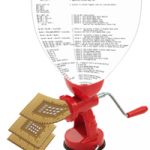You are currently viewing SemiWiki as a guest which gives you limited access to the site. To view blog comments and experience other SemiWiki features you must be a registered member. Registration is fast, simple, and absolutely free so please,
join our community today!
As we celebrate the 50[SUP]th[/SUP] anniversary of the publication of Moore’s Law in Electronics Magazine (April 19, 1965), the industry finds itself in an increasingly costly global effort to keep transistor scaling on track. “Is Moore’s Law dead?” is a common question these days.
But practically speaking the doubling of transistor… Read More
Next week Mike Jensen of Mentor will present a webinar Improving Complex System Design Reliability and Robustness. The webinar will be presented live twice and presumably available for replay soon after, as is usually the case:
- September 4th 6.00-6.45am pacific (9pm in Asia, 3pm in most of Europe)
- September 4th 10.00-10.45am
…
Read More
The growing capabilities of silicon along with improved algorithms means that machine vision is becoming increasingly important since more and more systems can be built in such areas as manufacturing, intelligent traffic management, bar code scanning, counterfeit detection and even sports simulation. Is that a 3X driver?… Read More
According to Steven Hawking, Bertrand Russell once gave a public lecture on astronomy. He described how the earth orbits around the sun and how the sun orbits around our galaxy. At the end of the lecture, a little old lady at the back of the room got up and said: “What you have told us is rubbish. The world is really a flat plate supported… Read More
Gary Smith has been talking about how the electronic system level (ESL) is where the future of EDA lies as design teams move up to higher levels encompassing IP blocks, high level synthesis, software development using virtual platforms and so on. At DAC this year in Austin he talked about how the fact that EDA controls the modeling… Read More
There are two main approaches to building a substructure on which to do software development and architectural analysis before a chip is ready: virtual platforms and FPGA prototyping.
Virtual platforms have the advantage that they are fairly quick to produce and can be created a long time before RTL design for the various blocks… Read More



